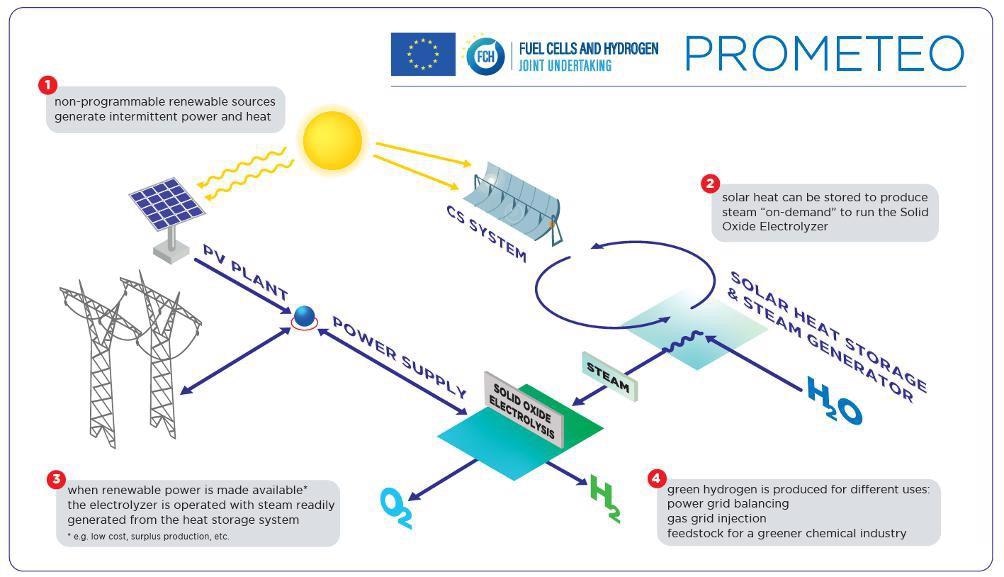Mar 26 2021
Engineers from École polytechnique fédérale de Lausanne (EPFL) are participating in PROMETEO—an EU research project to produce hydrogen on a huge scale from renewable sources, as part of a measure to reduce industrial carbon emissions.

Image Credit: ENEA.
Hydrogen is an ideally clean energy source, whether as a storage medium or as a fuel. But the processes employed to produce it are not clean, as they still depend chiefly on electricity or fossil fuels such as coal, gas, and oil.
At the beginning of 2021, an EU project called PROMETEO was started. Under this project, engineers will work to design a new system for the large-scale synthesis of clean hydrogen, by making use of only renewable energy sources. This would enable a decrease in the carbon emissions of several significant manufacturing industries. Jan Van Herle’s research group at EPFL Valais-Wallis in Sion is also a part of this initiative.
The concept is to construct a prototype that makes use of electrolysis to derive hydrogen from water—the “H” in H2O. However, instead of using water in its liquid state, as is generally done, the new system will make use of steam and solid oxide electrolysis (SOE) technology, which requires temperatures of more than 700 °C. The heat and energy required to operate the prototype will be completely obtained from solar energy.
It is anticipated that the prototype will generate around 15 kg of hydrogen daily. To tackle solar energy’s intermittent nature due to changes in sunlight, the engineers will test a novel plan for handling the several phases of energy conversion (electrolysis, producing electricity, and maintaining the electrolyzer in a “hot stand-by” mode).
Their approach includes reducing drawdown from the power grid and enhancing generation from stored renewables whenever solar energy (or wind energy for the electrolysis phase) is not available.
By using steam electrolysis to supply hydrogen, our system will use a third less power than is currently required for water electrolysis. This is already a huge savings, as power is the most expensive budget item in an electrolysis plant's operating costs.
Jan Van Herle, École polytechnique fédérale de Lausanne
“But the real advantage of solid oxide technology is that it is also reversible, meaning it can generate power on demand, which is then fed into the grid. Our converter will always be operational in one direction or the other, overcoming the problem of intermittency and making the most efficient use of solar heat and energy. Conventional liquid water electrolysers, on the other hand, spend a lot of time sitting idle,” added Herle, whose team is specialized in SOE.
The Italian National Agency for New Technologies, Energy and Sustainable Economic Development (ENEA), which will lead an interdisciplinary consortium of nine European organizations, including EPFL, will be coordinating PROMETEO. This pioneering, 3.5-year project has obtained financial support of €2.5 million from the European Commission.
The aim of this project is to help fulfill the Commission’s climate targets for 2030 and 2050, especially by promoting the adoption of renewable energy sources by industries that make use of a large amount of hydrogen, like the metallurgy, petrochemicals, hydrogen fuel-cell industries, and methanol and ammonia synthesis.
Moreover, PROMETEO engineers will investigate the ability to reproduce their process on an industrial scale. SOLIDpower, the company that designed the technology, has already demonstrated a system that can generate up to 50 kg of hydrogen daily and is currently working on scaling this up.